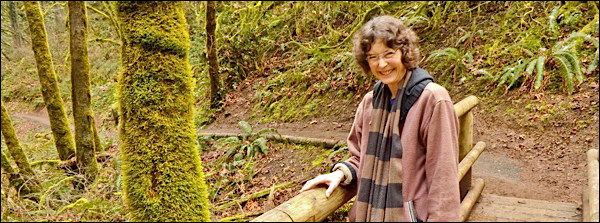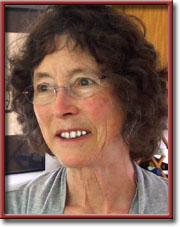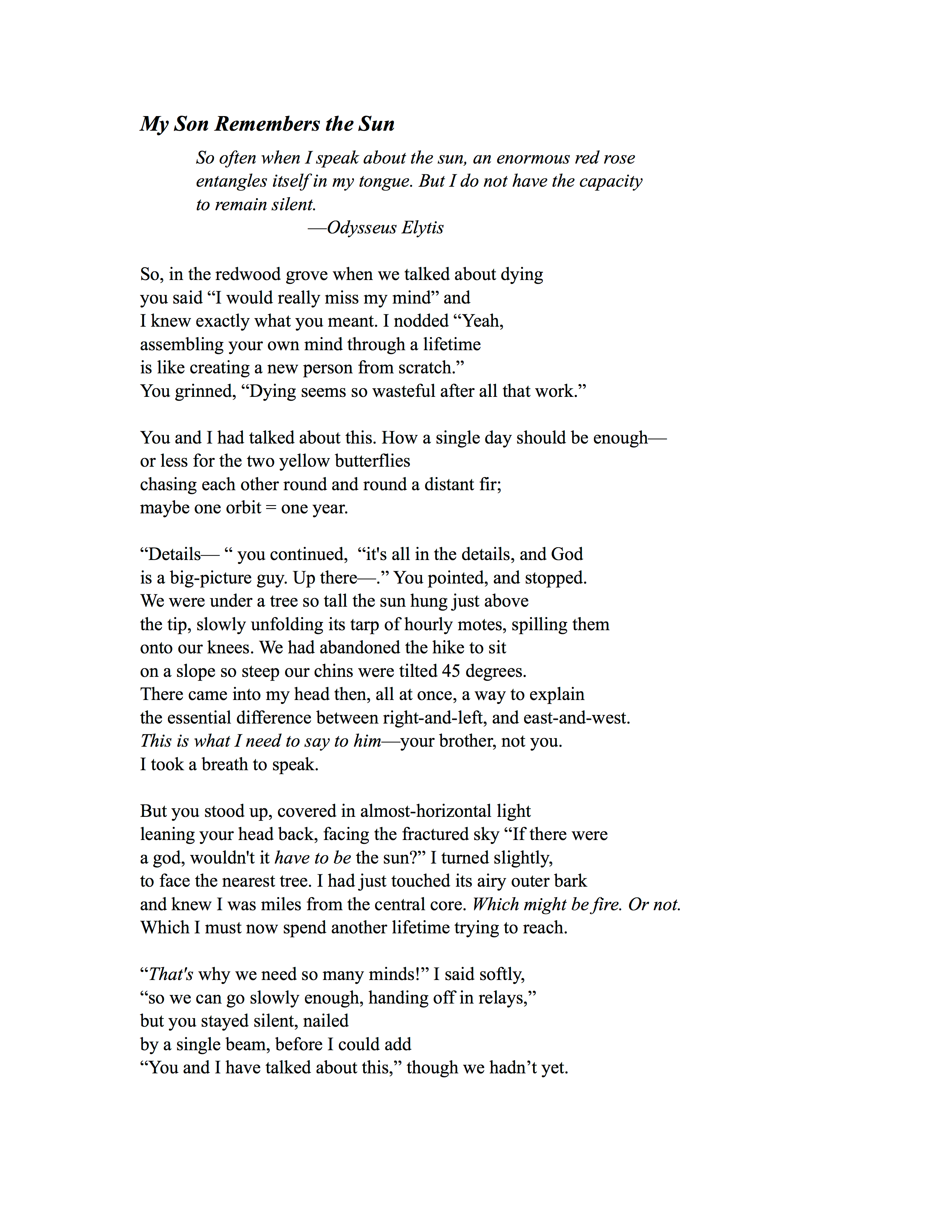My Son Remembers the Sun
“You and I had talked about this. How a single day should be enough—/or less for the two yellow butterflies/chasing each other round and round a distant fir . . .”—Anita Sullivan
The Highest Cauldron
By Anita Sullivan

EUGENE Oregon—(Weekly Hubris)—11/16/2015—
Note: The translation of the fragment from Odysseus Elytis’s poem is by Anita Sullivan.
To order Anita Sullivan’s book, Ikaria: A Love Odyssey on a Greek Island, click on the book cover below.




2 Comments
Elizabeth Boleman-Herring
I love the spooky action at a distance nature of time in this poem. The lines of communication: always meta, between son and mother and son. In my mind, too, as in this scene, Anita, whatever I read, whatever I feel, see, think . . . blurs and is stirred (and shaken). And you describe that impossible-to-describe interplay so very well. (PS http://www.nytimes.com/2015/10/22/science/quantum-theory-experiment-said-to-prove-spooky-interactions.html?_r=0)
Anita Sullivan
Thanks for the NYT reference. I am bewildered by the earnest scientists who keep trying to “prove” things that poets and philosophers have known for centuries. For example, the parallel universe idea of modern physics was spoken of with certainty by Hippolytus; Leucippus refuted Parmenides by figuring out a way to say nothingness can exist, and the Upanishads understood the deep paradox of “the imperishable,” upon which is woven the ether, inside which decay happens. Action at a distance happens, or does not. In the poem, I’m also thinking about the Tree as a good candidate for god (always with a small “g”!!)